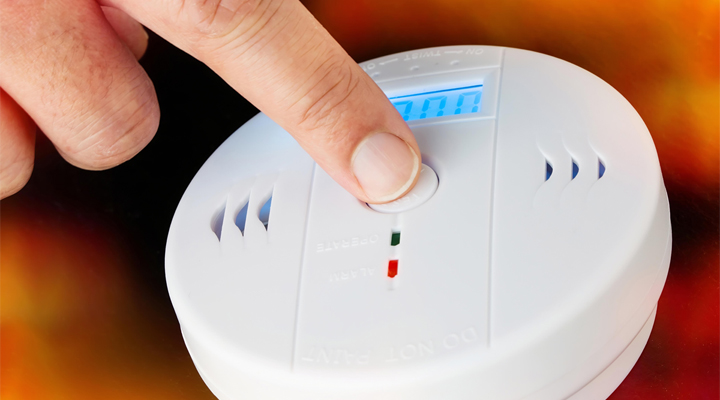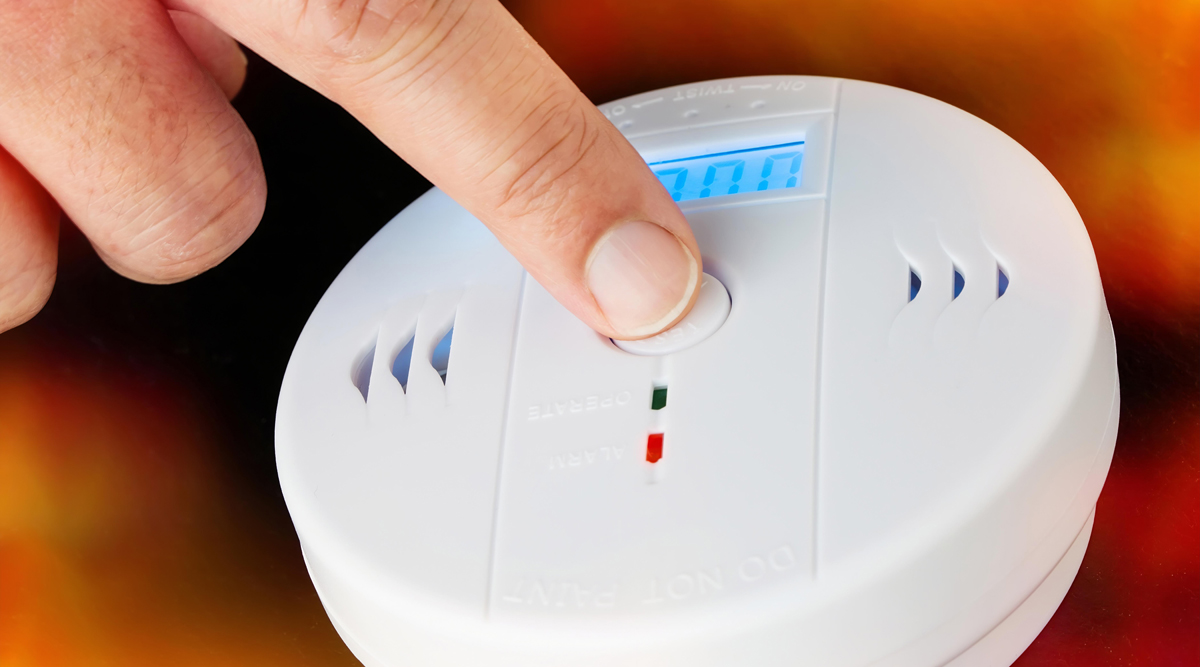Carbon Monoxide Monitors and Your HVAC System
Between 2010 and 2015, at least 2,244 accidental deaths have been attributed to carbon monoxide (CO) poisoning. Carbon monoxide has been called the “silent killer,” since it is odorless, colorless, and tasteless.
It is the result of incomplete combustion—a fire without enough oxygen; it is a poison harmful to both humans and pets. Sources of CO in a home might include gas fireplaces, furnaces, ranges, and, of course, cars running in enclosed spaces. Here are 7 Carbon Monoxide Monitor tips to help protect your family from CO poisoning.
Tip 1: Have Your Fireplace and Chimney Inspected Regularly
Fireplaces and woodstoves need to be inspected to make sure they operate efficiently and safely. Bird nests or other items have been known to block or restrict exhaust gases from the chimney, and cracks in the chimney allow deadly gases to enter the home.
The inspection will also check for soot and creosote, both results of incomplete combustion.
Creosote buildup in the chimney can ignite, creating an inner chimney fire, shooting flames out of the top of the chimney, and possibly starting a house fire.
The inspection will also include a check the damper, making sure that it opens and closes properly; a broken seal in the damper will result in the loss of a tremendous amount of heat.
The chimney for gas fireplaces should also be inspected. Also, inspect the glass door for cracks and the burner or gas logs for cracks. Inspect the valve and igniter to make sure the fireplace is functioning efficiently.
Tip 2: Install Carbon Monoxide Monitors with an Alarm
Please consider installing a Carbon Monoxide Monitor in your home, since people and pets cannot detect carbon monoxide. Smoke detectors and Carbon Monoxide Monitors are very similar; the difference is CO detectors isolate a specific gas.
CO detectors are commonly available as a DIY installation project. The guide includes installation and maintenance instructions. Contact Dr. Cool and Profession Heat to investigate any problems with your CO detector.
It is recommended that both smoke and Carbon Monoxide Monitors be tested once a month or according to the manufacturer’s instructions. IF YOUR CO ALARM SOUNDS, YOU ARE IN DANGER OF CARBON MONOXIDE POISONING. Get your family to safety and call 911. The NFPA (National Fire Protection Association) states the fact:
“A person can be poisoned by a small amount of CO over a longer period of time or by a large amount of CO over a shorter amount of time.”
Tip 3: Schedule Regular Maintenance
Your HVAC system should be inspected regularly by a qualified HVAC professional and the inspection can include other gas burning systems, such as ranges and water heaters.
An inspection of the HVAC system will include a check of components, inspection and cleaning of ducts, and a check of flues and oxygen intake. Regular maintenance will ensure that your HVAC system has a long lifespan—typically 20 years or more.
For natural gas heating systems, consider scheduling a pre-season HVAC system inspection and cleaning to avoid furnace failure or serious injury.
Of course, if you notice any strange odors or noises during the course of the winter, it may indicate a problem developing, and it should be addressed immediately to avoid total furnace failure or serious injury.
Tip 4: Replace Your Carbon Monoxide Monitor Batteries Twice a Year
If your smoke alarms are powered by a nine-volt battery, the battery should be replaced every 6 months, while the alarm itself should be replaced once every 10 years. For 10-year lithium-powered smoke alarms, you won’t need to replace the battery.
Instead, replace the entire alarm after 10 years have passed. If your alarm is hardwired into your home’s electrical system, replace the backup battery at least every 6 months and replace the smoke alarm itself once every 10 years.
Tip 5: Don’t Run Your Vehicle Inside Your Garage – Ever
The danger of “warming” your car in the garage is extremely dangerous, even with the garage door open. Running a vehicle inside the garage for only two minutes raises the CO level in the garage to toxic levels and the natural flow of gases is into the house.
According to T.H. Greiner, Ph.D., P.E. Agricultural Engineer, “the extremely high concentrations of carbon monoxide produced by an engine can raise CO concentrations in a closed building so quickly that a person may collapse before they even realize there is a problem.”
Tip 6: Do Not Heat Your Home With Your Gas Oven
Some people are tempted to turn on their ovens and stoves when the temperatures drop into the single digits. Kitchen ovens obviously weren’t designed with the intention of heating a home. Not only is it an inefficient way to heat a large space, but it’s also very risky, and could lead to carbon monoxide poisoning.
You are putting yourself at risk for CO Poisoning if you try to use the oven for heat. When you use your appliance correctly, you don’t need to worry about carbon monoxide poisoning. But when you open the door to use a gas oven as a heater is not the right way to use the appliance.
A properly tuned oven should put out no more than 50 CO parts per million when the door is closed. But when the door is opened it will take CO to dangerous levels. Understand that your oven does not have any safety features regarding depleted oxygen levels or carbon monoxide production.
Tip 7: Be Cautious When Using Fuel-Burning Space Heaters
Only use space heaters in well-ventilated areas. Any space heater (fuel or electric) can be a fire hazard if not used properly and should be used with caution. Space heaters are extremely dangerous. The National Fire Protection Association estimates that between 2009 and 2013, heating equipment caused more than 56,000 home fires in the United States.
Space heaters were the cause of 40% of these fires and caused 5 out of 6 (84%) of the deaths resulting from all house fires caused by heating equipment. In addition, gas and oil-fueled space heaters give off significant carbon monoxide and carbon dioxide.
Remember, the leading causes of carbon monoxide in your home; faulty furnaces, water heaters, stoves, and fireplaces, can be avoided by proper maintenance and use. Take all of the necessary precautions to keep your family safe.
Have your HVAC inspected and cleaned every year by a professional. With proper maintenance, your furnace will work more efficiently and save you money on expensive energy costs, and most importantly…keep you and your family safe.
Have Questions About Carbon Monoxide Monitors?
Doctor Cool and Professor Heat are independent American Standard dealers with over four decades of HVAC Air Filter, HVAC maintenance, Carbon Monoxide Monitors, and furnace repair installation and repair experience.
Call Doctor Cool & Professor Heat today at 281-338-8751 or email Doctor Cool. The longer you ignore or put off making the call, the longer it will be before you improve your indoor air quality.

